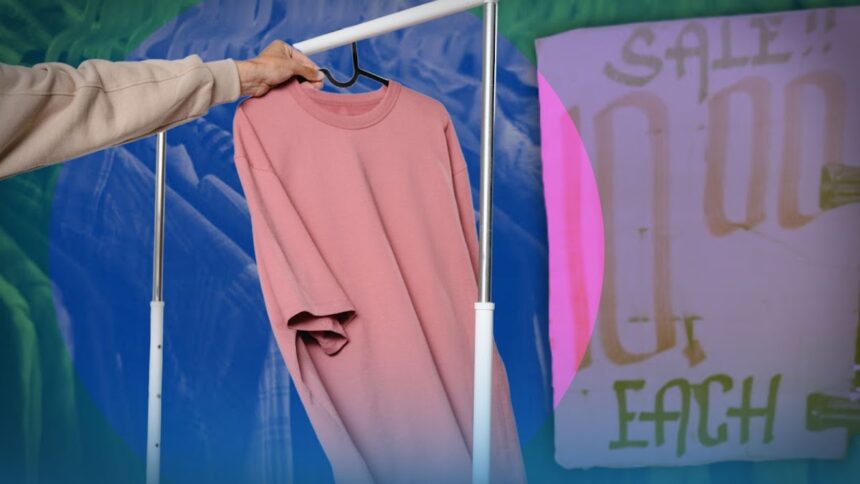Generation Z (GenZ) is well-known for its inventiveness and uniqueness, where this generation transformed how society perceives fashion. Unlike previous generations, which relied primarily on brand-new trends from major retail chains, GenZs has embraced the appeal and practicality of ukay-ukay or thrift shopping.
Rise of ukay-ukay trend
Based on a blog post from Thrifted, ukay-ukay or pre-loved clothes became the best option if someone is looking for affordable yet fashionable clothing. Thrifting somehow became a therapy haven. Besides low prices, thrifting helps buyers build a more unique aesthetic and personalized style.
This obsession is more than just finding cost-effective clothing; it is a movement that promotes sustainability, creativity, and personal expression. For GenZ, pre-owned wardrobes offer more than simple items; they are opportunities to create unique looks, reduce waste, and break free from the restrictions of conventional fashion.
“When you buy at thrift stores, you can be assured that what you will get are unique pieces that you will not find anywhere else,” Rendel Angeles, a loyal ukay-ukay customer, added.
Thrifting through time
According to Ma. Rina Locsin’s book, Fashioning a Culture through Baguio City’s Ukay-Ukay, ukay-ukay is derived from the Filipino word ‘hukay,’ meaning ‘to dig,’ tracing its origins to the mountainous regions of Baguio City in the 1980s.
These secondhand goods were initially donated by foreign countries, such as the United States, especially during calamities. This serves as a charity to help local communities in need. Over time, enterprising individuals saw the potential of selling pre-loved clothing as a business, with areas like Cubao Expo becoming popular hubs for ukay ventures.
In its early days, ukay-ukay was a practical choice for budget-conscious individuals. However, as fashion-savvy individuals began to notice the vintage-like appeal of thrifted pieces—ukay-ukay became synonymous with personal style.
As years passed, ukay-ukay was no longer only about affordability. It had become a symbol of individualism and sustainability, particularly among younger generations.
Treasure hunt on a budget
Data from the 2023 Family Income and Expenditure Survey (FIES) show that household spending, particularly for basic needs, has grown due to inflation increase affecting a variety of essential non-food costs, including clothing.
Based on the survey, families are adjusting to increased expenses, which may explain why many Filipinos prefer affordable options, such as ukay-ukay rather than department stores or branded items.
Thrift stores provide a solution by offering high-quality apparel at a lower cost, allowing younger consumers to express themselves through fashion without exceeding their allocated budget. Furthermore, thrift shopping can be a treasure hunt for high-end or branded products at incredibly low costs.
In an article published by JP Sium on Manila on Sale, it is not uncommon for ukay-ukay customers to find high-end or unique items for just as low as 50 pesos to 250 pesos. This affordability allows individuals to create beautiful collections that reflect their personalities, strengthening ukay-ukay’s reputation as a practical and better option.
Environmental impact of ukay-ukay
According to the United Nations Environment Programme, the fashion industry is responsible for lots of global carbon emissions and wastewater generation annually, where the growth of ukay-ukay coincides with eco-friendly methods for mitigating the negative consequences of contemporary fashion.
Buying used clothing contributes to extending the life of garments and reducing textile waste, lessening the demand for new clothing manufacturing. About 63% of GenZ respondents of a 2023 ThredUp resale report study said they prefer to buy used materials to reduce their environmental footprint.
Their appreciation for secondhand clothing has transformed ukay-ukay into a sustainable fashion movement, demonstrating how minor lifestyle adjustments, like being mindful in wearing pre-loved clothing, may have a big environmental impact.
The Nostalgia Effect
Joyce Gereige, a fashion stylist, said that Gen Z’s passion for nostalgia and old style is closely linked to their obsession with ukay-ukay. Many young people take pleasure in bringing back fashion from old times, including the 1990s, Y2K, and old money in an era of digital culture when trends change quickly.
Gen Z can recreate or reimagine classic fashion trends because of various apparel among ukay-ukay finds.
Social media platforms like Instagram, YouTube, TikTok, and others have greatly promoted the development of ukay-ukay culture. Aesthetic styles, like ‘cottagecore,’ ‘retro vibes,’ and ‘Y2K’ are frequently chosen using ukay-ukay discoveries, demonstrating thrift’s creative and stylistic possibilities.
Canvas of Self-Expression
A study from 2024 suggests that ukay-ukay is more than an approach to saving money or looking fashionable for Gen Z; it is a form of self-expression. Each thrifted item allows them to construct a personal identity by mixing and matching different styles to create an appearance that is entirely their own.
Unlike fast fashion, which frequently drives patterns, ukay-ukay encourages individuality through a wide spectrum of styles. Thrift shopping also provides an opportunity to challenge outdated gender stereotypes in fashion. Many ukay-ukay buyers seek unisex and androgynous clothing—challenging conventional ideas about how men and women ‘should’ dress.








